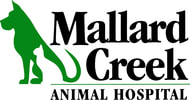Laurie Anne Walden, DVM  You may have read recent news reports about a possible association between grain-free diets and heart disease in dogs. Here’s what we know about this issue so far. In July 2018, the US Food and Drug Administration (FDA) notified the public that they were investigating reports of dilated cardiomyopathy in dogs eating diets whose main ingredients were legumes (such as beans, peas, and lentils) or tubers (potatoes and sweet potatoes). These ingredients are common in diets labeled “grain free.” Dilated cardiomyopathy is a disease of the heart muscle. In this disease, the heart chambers enlarge and the chamber walls become thinner and weaker. Patients may develop a murmur and an irregular heartbeat. If untreated, the condition leads to heart failure and death. Symptoms, which often don’t appear until the patient is in heart failure, include decreased energy, coughing, and episodes of collapse. The causes of dilated cardiomyopathy are not fully known, but several factors have been implicated. The disease is thought to have a genetic link; it’s familial in Dobermans, boxers, and other large breeds. In cats and sometimes in dogs, it is also associated with dietary deficiency of the amino acid taurine. Taurine is not considered an essential dietary nutrient for dogs. Normally dogs (unlike cats) can synthesize taurine from other nutrients in their diets. But some dogs, notably golden retrievers and Cocker spaniels, do develop taurine deficiency that leads to dilated cardiomyopathy. The dogs with dilated cardiomyopathy in the recent reports were of various breeds, not just the breeds considered typical for dilated cardiomyopathy. Some of the dogs with dilated cardiomyopathy who were eating grain-free diets had normal blood taurine levels, so simply adding taurine to the diet might not solve the problem. Dr Lisa Freeman, a veterinary nutritionist at Tufts University, has suggested that changes in how the body processes taurine could lead to a functional taurine deficiency even if levels of taurine in the diet and the blood are normal. A high proportion of legumes in the diet could affect the way a dog’s body metabolizes amino acids (by altering gut bacteria, for instance). Other explanations of how grain-free diets could be connected to dilated cardiomyopathy have been proposed, although most are still speculative. Taurine deficiency could potentially result from increased excretion of taurine in feces. A diet with legumes and tubers as main ingredients could be deficient in nutrients dogs need to make taurine. Other ingredients, like exotic protein sources, could also be associated with dilated cardiomyopathy, according to Dr Freeman. At this point, the potential link between grain-free diets and dilated cardiomyopathy is not clear. The FDA is continuing to investigate, and cardiologists from several veterinary schools (including the University of California, Davis) are collecting more data. What you should do So far there is no evidence that legumes and potatoes in dog food cause a problem if they are not main ingredients—that is, if the food is a conventional diet that also happens to include these ingredients. If you’re currently feeding your dog a grain-free diet or one containing exotic ingredients (like kangaroo), talk to your veterinarian about the possible risks. Also ask your veterinarian if your dog really needs to eat that diet. For the vast majority of dogs, a grain-free diet has no benefit over a conventional diet. Consult your veterinarian if your dog is showing symptoms of heart disease. If your dog has dilated cardiomyopathy, your veterinarian can test her blood taurine levels. Veterinarians and pet owners can report suspected cases of diet-associated dilated cardiomyopathy to the FDA through the online Safety Reporting Portal or by calling their state’s FDA Consumer Complaint Coordinator. Photo by John Price on Unsplash  Technicians Christine, Harold, and Pam Technicians Christine, Harold, and Pam Veterinary technicians are trained caregivers who fill a role in veterinary medicine similar to the role of nurses in human medicine. National Veterinary Technician Week (October 14-20, 2018) is a good time to talk about what veterinary technicians do. Veterinary technicians don’t just hold animals during examinations. In fact, holding is usually the job of another group of staff, the veterinary assistants. Veterinary technicians collect samples (like blood and urine) for testing, perform laboratory procedures, obtain radiographs, prepare patients and equipment for surgery, and monitor patients under anesthesia. They place intravenous catheters, administer medication, provide nursing care, and educate pet owners. Veterinarians diagnose disease and prescribe treatment; technicians (like nurses in human hospitals) implement the treatment plan. I asked the Mallard Creek technicians what they consider the best part of their job. They said they really like seeing sick patients they’ve been nursing get well, ready to go home to their owners. Watching family pets grow up is definitely a perk of primary care practice, but they all mentioned that the job is more than playing with puppies and kittens! Caring for sick and injured animals is tough work, often emotionally draining. Technicians are on the front lines taking care of ill animals that would usually rather be anywhere else. Most veterinary technicians in the United States work in private animal hospitals. Some specialize in certain types of practice, such as equine or emergency medicine. Veterinary technicians also work for research institutions, veterinary schools, zoos, diagnostic laboratories, animal shelters, pharmaceutical companies, feed companies, veterinary supply companies, government agencies, and the military. Veterinary technicians go through a 2- or 4-year course of study after high school, taking classes in subjects such as anatomy, animal diseases, dental procedures, nutrition, parasitology, and laboratory techniques. Their training covers multiple animal species. North Carolina has 4 accredited veterinary technician programs: Asheville-Buncombe Technical Community College (Asheville), Central Carolina Community College (Sanford), Gaston College (Dallas), and Miller-Motte College (Raleigh). To earn licensure, veterinary technicians must pass a national licensing examination. Technicians licensed in North Carolina must also pass a state examination based on the NC Veterinary Practice Act. To maintain licensure, veterinary technicians attend continuing education classes. North Carolina requires 12 hours of continuing education every 2 years for veterinary technicians. If you’d like to learn more about veterinary technicians, see the AVMA web page about veterinary technicians and assistants and the National Association of Veterinary Technicians in America website. |
AuthorLaurie Anne Walden, DVM Categories
All
Archives
June 2024
The contents of this blog are for information only and should not substitute for advice from a veterinarian who has examined the animal. All blog content is copyrighted by Mallard Creek Animal Hospital and may not be copied, reproduced, transmitted, or distributed without permission.
|
- Home
- About
- Our Services
- Our Team
-
Client Education Center
- AKC: Spaying and Neutering your Puppy
- Animal Poison Control
- ASPCA Poisonous Plants
- AVMA: Spaying and Neutering your pet
- Biting Puppies
- Boarding Your Dog
- Caring for the Senior Cat
- Cats and Claws
- FDA warning - Bone treats
- Force Free Alliance of Charlotte Trainers
- Getting your Cat to the Vet - AAFP
- Holiday Hazards
- How To Feed Cats for Good Health
- How to Get the Most Out of your Annual Exam
- Indoor Cat Initiative - OSU
- Introducing Your Dog to Your Baby
- Moving Your Cat to a New Home
- Muzzle Training
- Osteoarthritis Checklist for Cats
- What To Do When You Find a Stray
- Our Online Store
- Dr. Walden's Blog
- Client Center
- Contact
- Cat Enrichment Month 2024
|
Office Hours
Monday through Friday 7:30 am to 6:00 pm
|
Mallard Creek Animal Hospital
2110 Ben Craig Dr. Suite 100
|
Site powered by Weebly. Managed by IDEXX Laboratories

 RSS Feed
RSS Feed